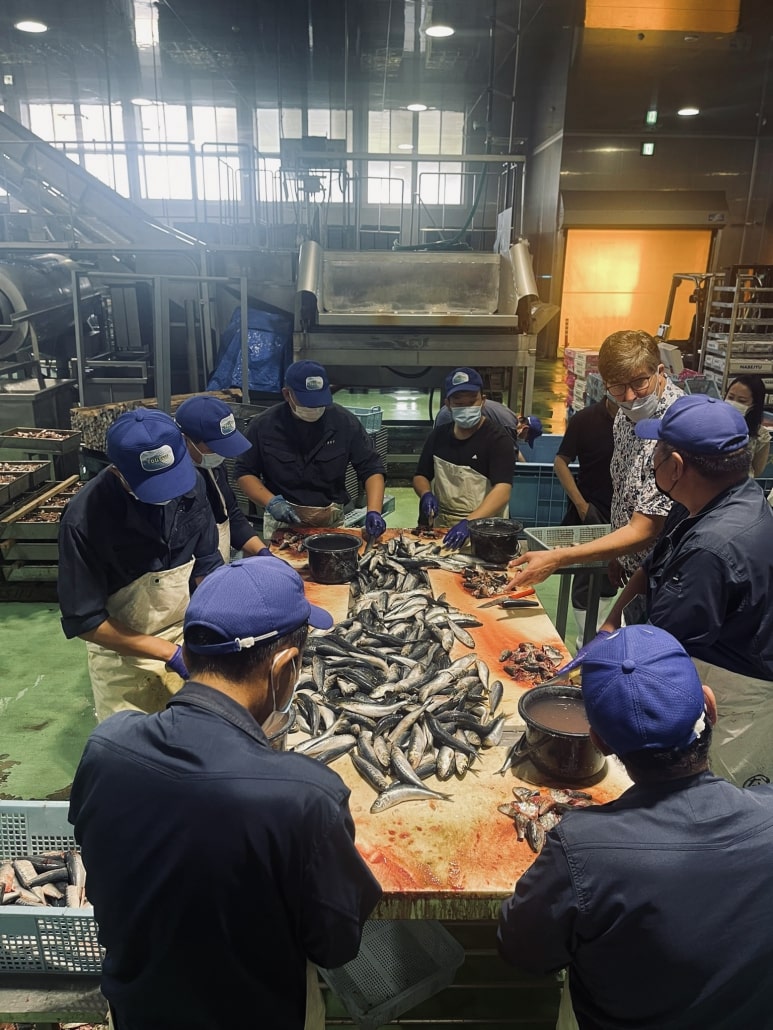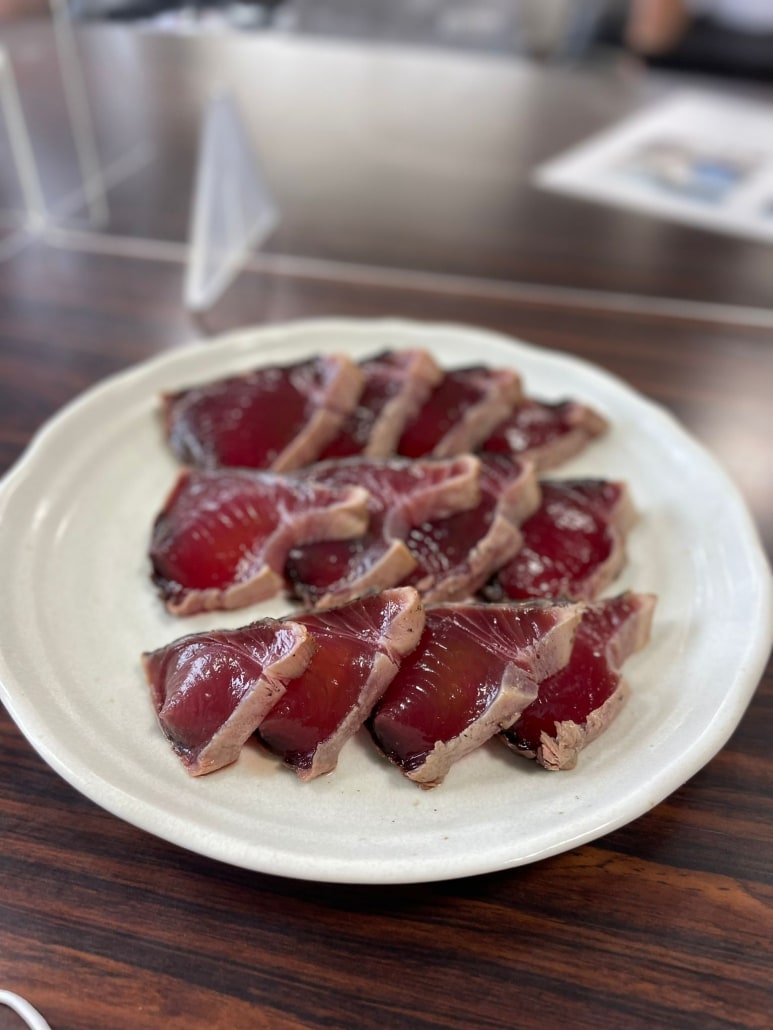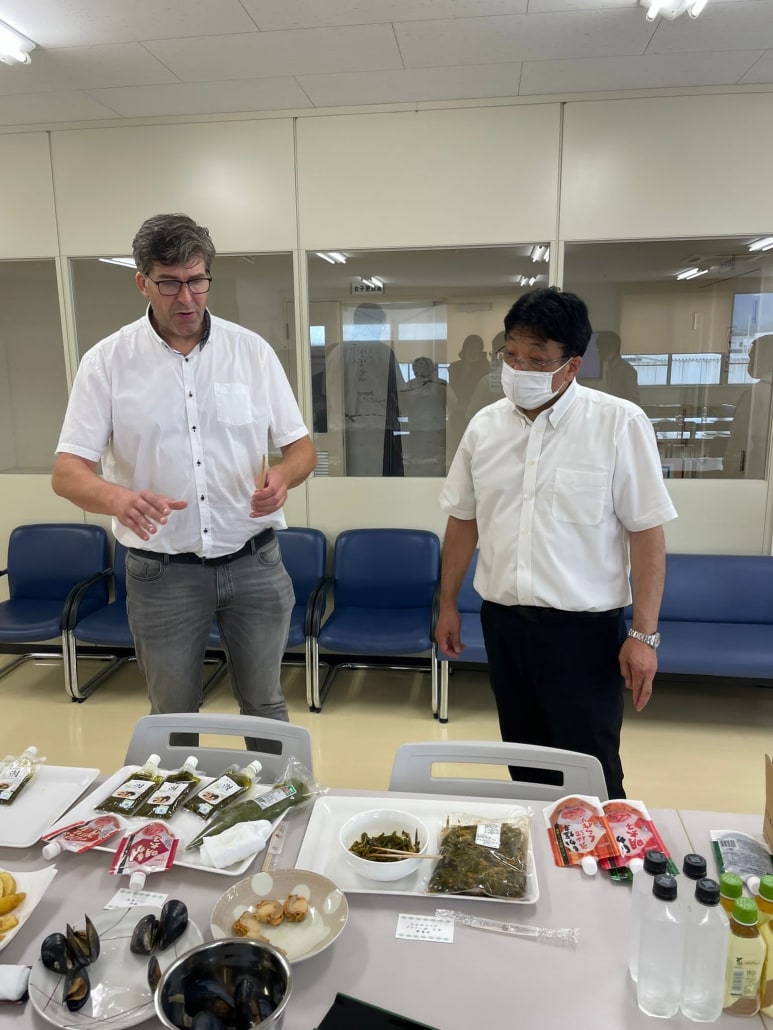Bringing you the best products from Sanriku Joban
300 kilometers of beautiful Japanese east coast along the pacific. In 2011, after the earth trembled unprecedentedly, this area was completely destroyed by waves, some as high as 40 meters, that knew no mercy and did not stop. The area was completely rebuilt 12 years after that and is buzzing with passion and business. JETRO (Japan External Trade Organization) invited me on a trip to the companies that have risen again from the ground up along this so hard-hit coastline. The buildings are new and clean, the entrepreneurs resilient and determined, the products are made with passion, hardship and incredible tradition. How I love this country. – Marinus Noordenbos
Iwashi – sardines
In the spring of 2022, during a vacation in Japan, I went to Choshi with my Japanese in-laws. Here we met our acquaintance from Holland, who took us to the local fish auction. When I’m in Japan, I’m always looking out for new products to bring to Europe. This is probably why my in-laws don’t look surprised when I say I want to drive by the fish market. Fortunately, they share the same unconditional love for good food. Early in the morning, before breakfast, we drove to the auction. There the fishermen were busy unloading the iwashi catch. One truck after another drove away, fully loaded with beautiful iwashi. The trucks were so full that fresh iwashi occasionally tipped over the edge and landed in the street. When I picked up a few stray fish from the street, my heart immediately skipped a beat. The iwashi looked so beautiful and full of fat, “this must go to Holland,” I muttered as I ran after my family.
Iwashi is a popular fish in Japan, partly because it is not so expensive, but mostly because the taste is insanely good. The Japanese know many ways of preparing iwashi. Grilled with just a little salt, or filleted as sashimi, for example. At Hokkai, we have 4 different preparations of iwashi. Lightly salted and dried, then it is called: maruboshi. Filleted and marinated in soy sauce and mirin and sprinkled with sesame seeds: mirin boshi. These two variations need to be cooked briefly in the hot oven and are also suited for BBQ. Then we have a package of 4 pieces, which are not pre-flavored, so you can prepare them as you like. Finally, we have iwashi fry: filleted sardines with a nice, crispy breadcrumb coating.
With the help of the JETRO, I found a suitable supplier who has the Iwashi caught, packaged and shipped to Europe at the perfect time in the season. Tosui is a large company that processes these fish in a brand-new factory. When we visited, the staff had just begun filleting a large pile of iwashi. I could eat it raw, right off the cutting table. I was already an oddity here in the factory hall with my two meters, and now they gave me an even stanger look. But it really is the only way to really get a good understanding of the fat content. And my mantra in the Netherlands is simple: fat is the main flavoring of fish and therefore also of the iwashi. Consequently, this iwashi is blissful.
After this trip, it took another month or so. But finally I got a phone call. There was 3000 kg of iwashi waiting for me at the port in IJmuiden. Ready to be prepared in your kitchen!
Katsuo – bonito
The bonito, skipjack tuna or katsuo in Japanese, has an unfortunate name. In fact, it is not a tuna but a fish from the mackerel family. Because the fish is so versatile, it has a true hero status in Japan. The bonito is actually a swimming stock cube. There is hardly a dish in Japanese cuisine that does not include this condiment. Broth from the katsuo, dashi, is the base of almost every Japanese dish. Smoked and shaved, we know the fish as katsuo bushi. When you put katsuo bushi shavings on a hot dish, it immediately comes alive. Due to the extremely light weight of the shavings, you will see that they begin to dance in the vapor of the dish. A magical sight and very instagrammable, which has also earned the fish hero status online.
In Shiogama, near Sendai, I learned that katsuo has many other variations. The company Meiho is a major bonito producer. Bonito, like tuna, is always frozen at extremely low temperatures, otherwise the meat discolors and the shelf life is much shorter. So during my visit to the company we were given a tour around a freezing cell that noted as much as -60 degrees. With iciles hanging from our noses and eyes half squeezed shut, we walked past crates full of frozen beautiful whole katsuo. The fish are caught with a hook and rod. They bite down on everything so you don’t even need bait on your hook, the director of Meiho told us in the cold. On board, a number of fisherman men stand ready with rods and when they sail over a shoal of katsuo it is simply a matter of hooking the fish and with a powerful bow swishing the bonito over your own head into the hold behind you. The fish is then immediately, frozen whole and stored at minus 60. Processing takes place without thawing the fish first. Large band saws are used to cut the fillets from fish. Then the frozen intestines are brushed out, as it were, with a special device that reminded me of a polishing machine from the local chop shop. After this, the still stiffly frozen fillets pass through a blazing inferno of gas torches, which cook the outside of the fillet. This process is called tataki. The inside remains raw and is still frozen. If you thaw the katsuo tataki at home and slice it into nice thin slices, there is a wonderful contrast in both taste and appearance between the charred outside and the silky, red and raw inside. This is incredibly delicious with a dressing of soy sauce (from Hokkai ;), spring onion, and ginger.
We received a large shipment of these roasted fillets and, of course, stored them neatly, as they would in Japan, at sixty degrees below zero. In an average kitchen freezer that cools to about minus eighteen degrees, you can keep this fish good for only four weeks. So cut it up quickly!
Mekabu – seaweed
The city of Kesennuma, in Miyagi Prefecture, was hit hard by the tsunami in 2011. The town is in the part of Japan through which the devastating tsunami raged relentlesly. In this region, every business owner has a gripping story. Behind the warmth and generous smile of the owner of Hachiyo Suisan, it is no different. During the tsunami caused by a massive earthquake, he lost everything he had built up over the years. The water rose up to 7 meters into his factory and took the entire contents with it on its way back to the sea. Stocks, machinery, premises; everything was gone, broken or unusable. ‘Such a disaster, oddly enough, also produces beautiful things,’ the owner tells us when we visit him. Even the biggest competitors worked together to rebuild our city. Where normally everyone competed against each other in the small fishing town, now a kind of togetherness arose. People were suddenly dependent on each other. First everyone helped each other to clean up the immense mess and later also to build up the production processes.’
The raw materials that came back were distributed fairly among the companies so that everyone could work on their recovery. Hachiyo Suisan produces Mekabu for the Japanese market. Mekabu is a fresh seaweed salad with a both salty and vinaigrette-like flavor and is praised for its healthy properties. The substance is slightly slimy; it is real seaweed. This is not immediately something we are used to eating in the Netherlands either, but don’t let that stop you from tasting this salad because the very deep and intense sea flavor is addictively delicious. The silky soft seaweed texture is very good to combine with cooked fish and can also be used perfectly in salads. These kinds of seaweed products, besides being very tasty, are also very good for your health.
When I later walked through the village, I saw what the owner meant. Truly everything around me here has been rebuilt. Every factory, every building even every street was new. All around the properties there are now high walls, not representative of the new togetherness that is still strong here, but serving only to keep out such a terrible wave.




